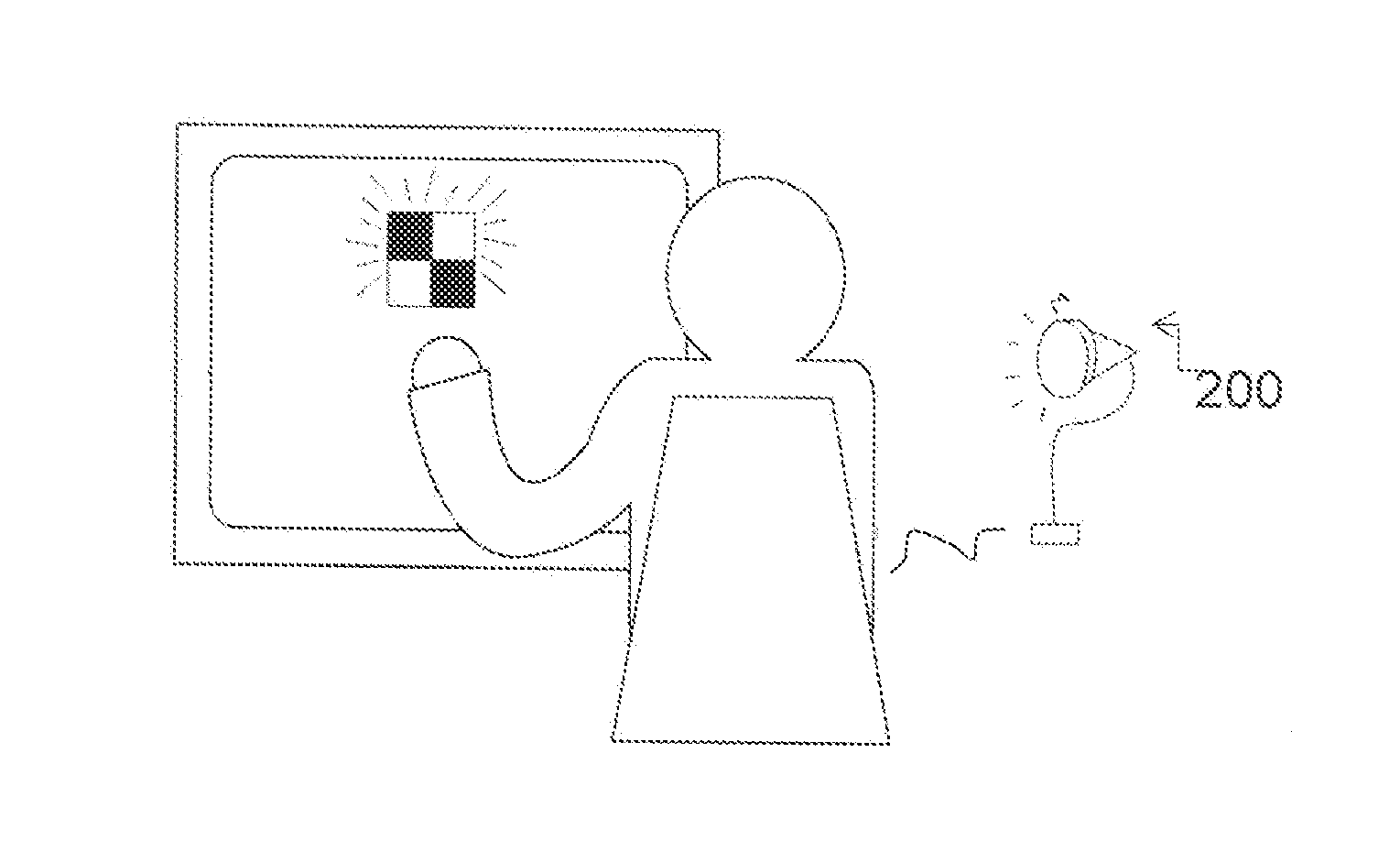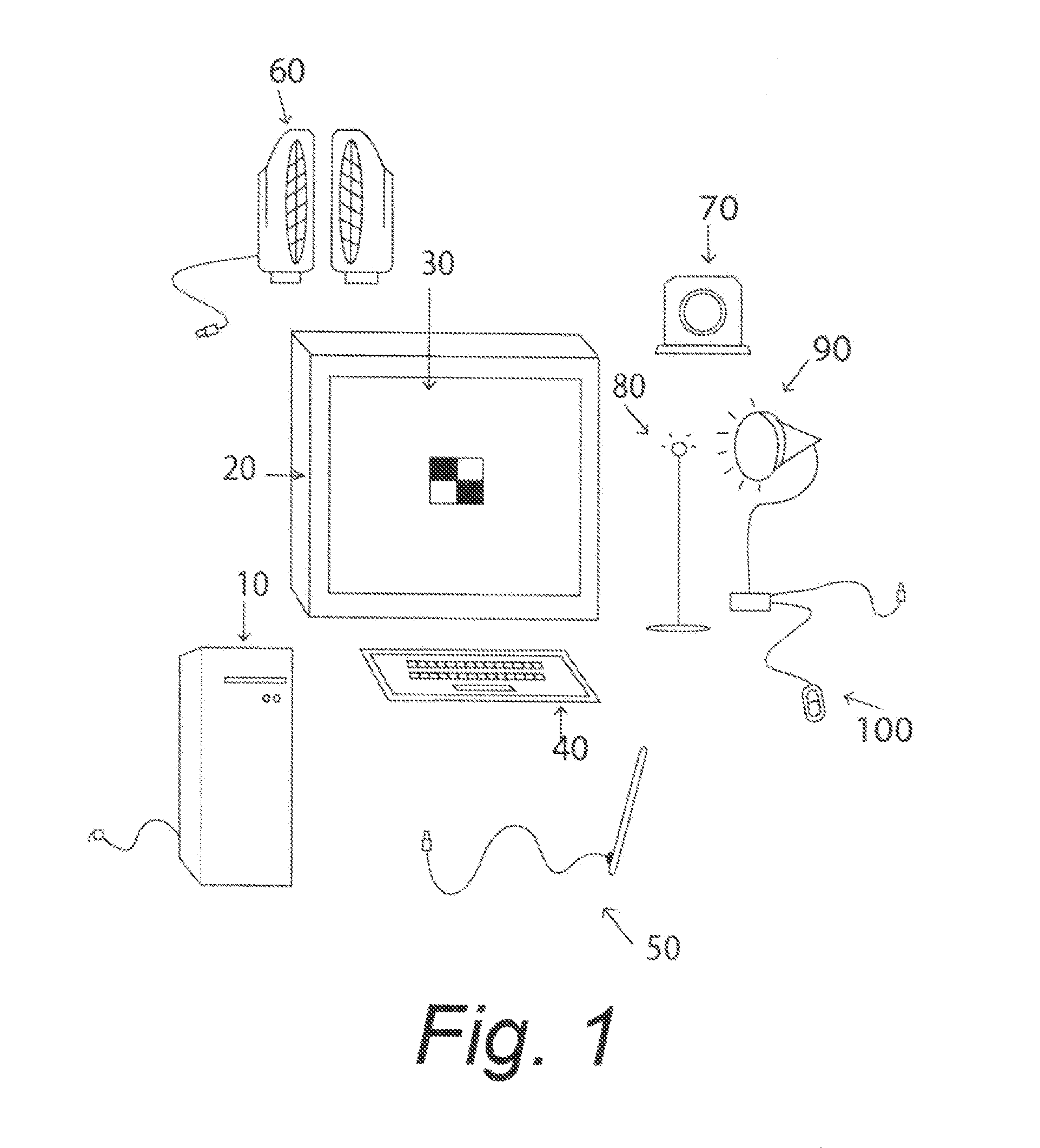Vision training method and apparatus
a training method and vision technology, applied in the field of apparatus and methods to retrain visual function, can solve problems such as non-uniform field
- Summary
- Abstract
- Description
- Claims
- Application Information
AI Technical Summary
Benefits of technology
Problems solved by technology
Method used
Image
Examples
Embodiment Construction
[0058]Although the present invention will be described principally with reference to the single embodiment shown in the drawings, it should be understood that the present invention can be embodied in many alternate forms of embodiments, some of the details of which are also described herein. In addition, any suitable size, shape or type of elements or materials could be used.
[0059]The terms “subject” and “patient” both are used herein to refer to an individual using the retraining system and method disclosed herein.
[0060]Turning to the drawings and referring to FIG. 1, the preferred embodiment for retraining the visual system is comprised of a conventional computer 10 including a CPU (Central Processing Unit) and having a hard drive containing one or more computer programs in a format executable by the CPU. Other programmable devices which can be used include a game box, or virtual reality device. The computer or other programmable device is connected to the following peripheral dev...
PUM
 Login to View More
Login to View More Abstract
Description
Claims
Application Information
 Login to View More
Login to View More - R&D
- Intellectual Property
- Life Sciences
- Materials
- Tech Scout
- Unparalleled Data Quality
- Higher Quality Content
- 60% Fewer Hallucinations
Browse by: Latest US Patents, China's latest patents, Technical Efficacy Thesaurus, Application Domain, Technology Topic, Popular Technical Reports.
© 2025 PatSnap. All rights reserved.Legal|Privacy policy|Modern Slavery Act Transparency Statement|Sitemap|About US| Contact US: help@patsnap.com



